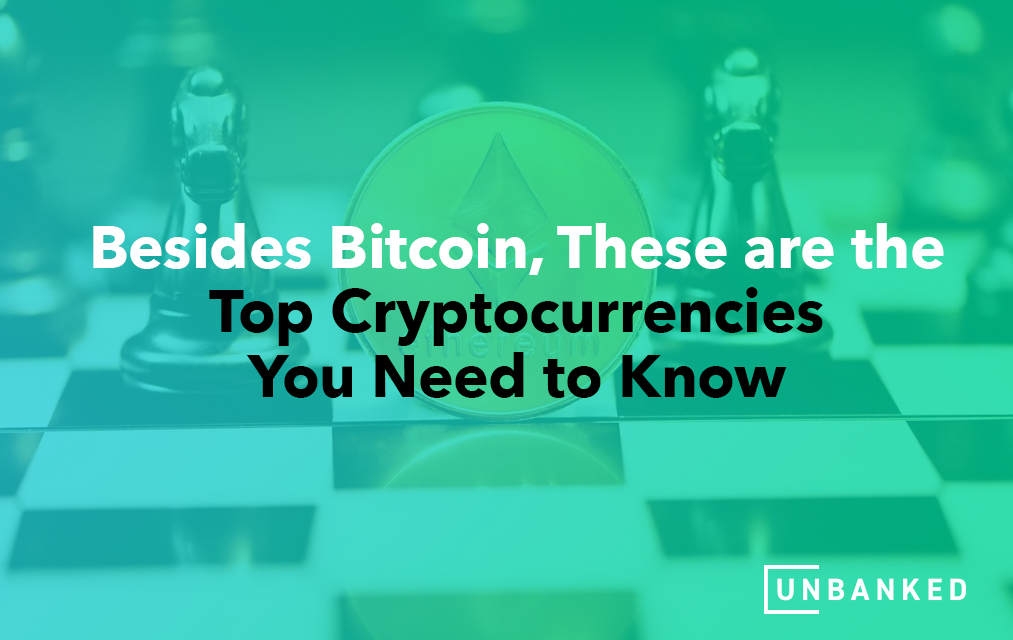Despite its price dropping by 20% at the start of 2022 after a difficult January, there is little doubt around the strong value and popularity of Bitcoin as the top cryptocurrency available. Bitcoin made it possible for people to believe that a digital currency was possible, with the help of decentralized networks to ensure that investors get their full value without going through the conventional banking system.
While Bitcoin has proven itself as a strong performing digital asset in recent years, with a market share topping 41%, it isn’t the only top cryptocurrency to invest in as there are countless altcoins available on the market. With tens of thousands of cryptocurrency alternatives available, here are the top cryptocurrencies you need to know about in 2022 and beyond.
Ethereum (ETH)
Ethereum is the second-largest digital currency worldwide
The next most recognizable cryptocurrency on the market is Ethereum (ETH), an open-source blockchain featuring smart contract functionality that was formally introduced in July 2015. It is the second biggest coin out there–only Bitcoin has a higher market capitalization than Ethereum, whose cap stands at $329 billion.
Ethereum also enables decentralized applications (dApps) to be created and then run without any fraud, third-party interference, or downtime. The digital asset formulates a decentralized financial product suite that anyone worldwide can access at any time. Some countries that aren’t bound by state restrictions or infrastructure access a wide range of loans and bank accounts, among other products. All Ethereum applications run on a platform-specific cryptographic token.
In late 2020, Ethereum moved its consensus algorithm from proof-of-work (PoW) to proof-of-state (PoS), allowing the Ethereum network to conserve energy during operations, improving transaction speed and processing while creating a more deflationary economic surrounding. Essentially, Ethereum acts as a type of digital money while also being a store of value.
Litecoin (LTC)
Litecoin was created by a former Google engineer and MIT graduate
Created by an ex-Google engineer, Charlie Lee, and introduced to the marketplace in 2011, Litecoin (LTC) became one of the first cryptocurrencies to succeed Bitcoin, typically referred to as the silver to Bitcoin’s gold.
The cryptocurrency is derived from an open-source global payment network that is decentralized, meaning it is not run by any central authority. Additionally, it uses scrypt as a proof-of-work which is then decoded thanks to consumer-grade CPUs. Litecoin mirrors its predecessor, Bitcoin, in various ways. However, it has a quicker block generation rate than Bitcoin, as well as a quicker transaction confirmation time.
Litecoin’s market capitalization is around $7.6 million as of February 2022, with more merchants worldwide accepting digital currency.
Bitcoin Cash (BCH)
While bearing the same name as Bitcoin, Bitcoin Cash (BCH) was established due to concerns about the amount of scalability and the speed of transaction verification.
Bitcoin transactions can take several minutes to process, thanks to the high volume of users slowing up the transaction speed. Plus, there have been several hard forks that have emerged from the original Bitcoin, meaning that new currencies formed. Forks occur when there are intense debates between developers and miners. Given how decentralized cryptocurrencies are, widespread changes must be made to the code underlying the token. Because of disagreements over the mechanisms surrounding the coding, a split occurs and the result in this instance was Bitcoin Cash.
BCH was introduced in the summer of 2017 by Bitcoin miners to address scalability concerns considering Bitcoin’s limited block sizes. The block size for BCH is increased from 1MB to 8MB, creating larger blocks that hold more transactions and process information faster. In October 2021, the maximum block size for BCH was increased to 32MB.
Cardano (ADA)
Cardano (ADA) is a type of digital currency created by engineers, cryptography specialists, and mathematicians using a research-based strategy. Ironically, Cardano was co-created by one of the founding members of Ethereum, Charles Hoskinson, who created the cryptocurrency after falling out with his fellow co-founders about Ethereum’s direction.
Cardano formed its blockchain through considerable experimentation and peer-reviewed research, with hundreds of papers written on blockchain technology spanning several topics. Compared to its point-of-sale peers and other significant cryptocurrencies, Cardano stands out because it has been said to be a serious threat to Ethereum, arguably topping them regarding the PoS consensus model. However, Cardano still has significant work to do with DeFi applications as it remains relatively new.
The cryptocurrency aims to be the worldwide financial operating system through creating De-Fi products while also offering solutions to rectify chain interoperability. Additionally, Cardano aims to offer problem-solvers for voter fraud and legal contract tracing.
Cardano has the world’s sixth-largest market capitalization at around $35 million.
Stellar (XLM)
This open blockchain network provides enterprise solutions by connecting various financial institutions to consolidate large transactions. Typically, transactions between investment firms and banks take several days and involve multiple intermediaries. Also, this can be costly and dissuade interactions. With Stellar (XLM), such bank-investment firm transactions can be made right away and the transaction involves minimal costs.
Stellar is an open blockchain, though it has gradually positioned itself as an enterprise-friendly blockchain for institutional arrangements. Cross-border transactions can occur using any currency, with Stellar’s native currency being Lumens. Built-in protocols automatically convert money sent via Stellar to Lumens before transferring it to the desired coin, with the conversion taking just a few seconds. Network users often own Lumens to conduct transactions.
Established in 2014 and officially launched in 2015, their market capitalization is now above the $5 million mark.
Binance Coin (BNB)
Binance Coin (BNB) operates as a utility digital currency, functioning as a payment method for any trading fees attached to the Binance Exchange, one of the world’s most widely used exchanges.
Currently, it’s the world’s fourth-largest cryptocurrency in terms of market capitalization with the cap standing at just over $63 million. Anyone who uses the Binance token as an exchange payment method can make discounted trades.
Previously an ERC-20 token that operated through Ethereum, Binance Coin launched on its own and uses a PoS consensus model.
Want to know more about the different cryptocurrencies that you can invest in aside from Bitcoin? Check out our resources to learn more about the different types of digital currencies available.





